Daniel Belteki reports on a decorative, but otherwise unsuccessful, interlude in the printing of a Royal Society journal.
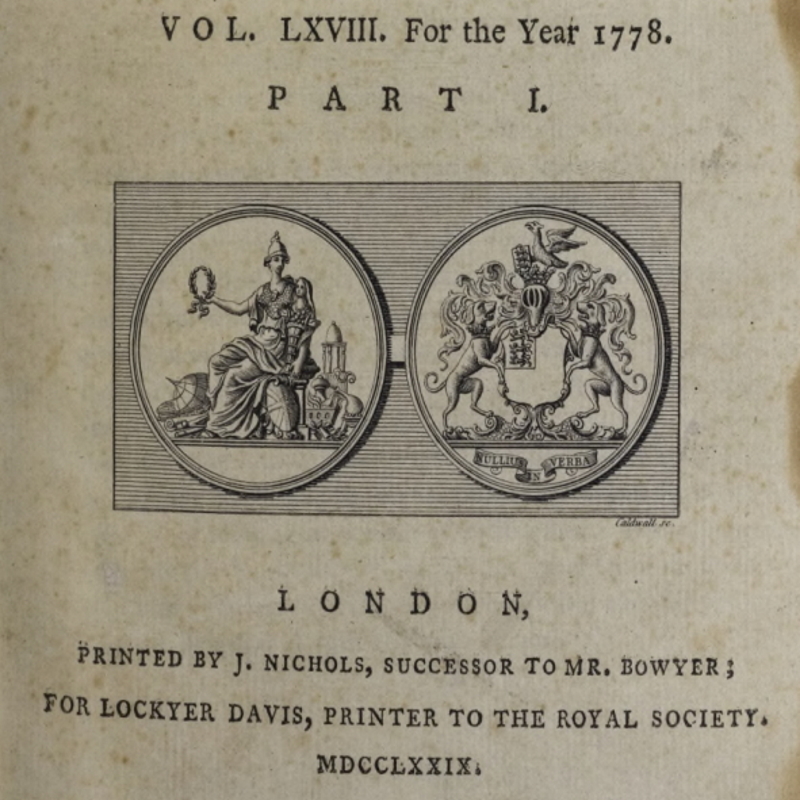
Our oldest journal, the Philosophical Transactions of the Royal Society, has featured many illustrations over the past centuries, but its pages are rarely adorned with decoration.
While researching the journal’s history, I discovered that there was a brief period between 1777 and 1791 when the Society decided to take a more aesthetic approach. However, the printer who oversaw this visual embellishment was sadly less than rigorous in other aspects of his craft, as I’ll explain below.
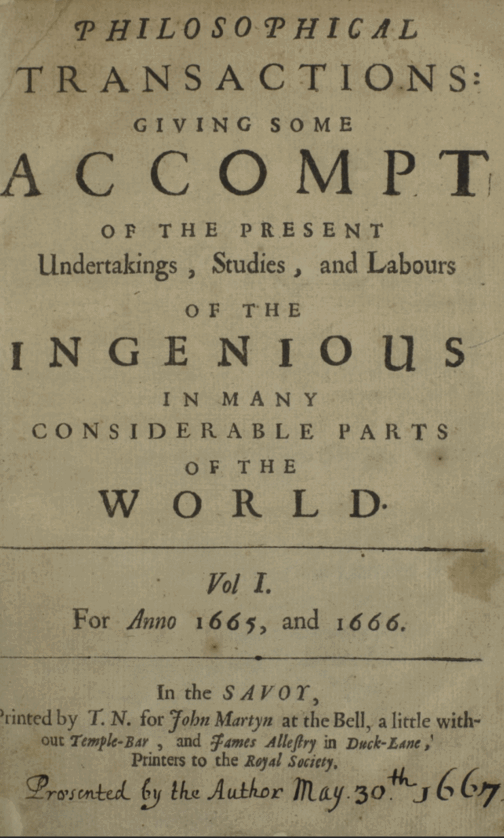
A gif showing how the visual style of the 1777 and 1778 title pages broke with the design used since 1665
The Philosophical Transactions volume published in 1777 included the coat of arms of the Royal Society on its title page, and featured ornamental designs to signal selected section breaks. The next year, the Royal Society decided to go even more decorative. At their Council Meeting of 24 March 1778 it was resolved that ‘a drawing be made of the [Copley] Medal in order to be cut in wood for an Ornament in the Title page of the Transaction, & That Mr [Joseph] Banks be requested to oversee the execution.’
Banks enlisted the help of a ‘Mr Carlberg’ to make the drawing. At the Council Meeting of 9 April 1778 it was finally resolved that ‘the whole Title page be, with this ornament for the future, printed from a Copper plate.’ The work resulted in the title page you can see below. One side of the Medal depicts the goddess Athene surrounded by scientific instruments representing a ‘broader notion of experimental science, which included discovery, trial and observation’. The other side shows the Royal Society’s coat of arms. This article by Rebekah Higgitt explores in more detail the symbols depicted on the medal.
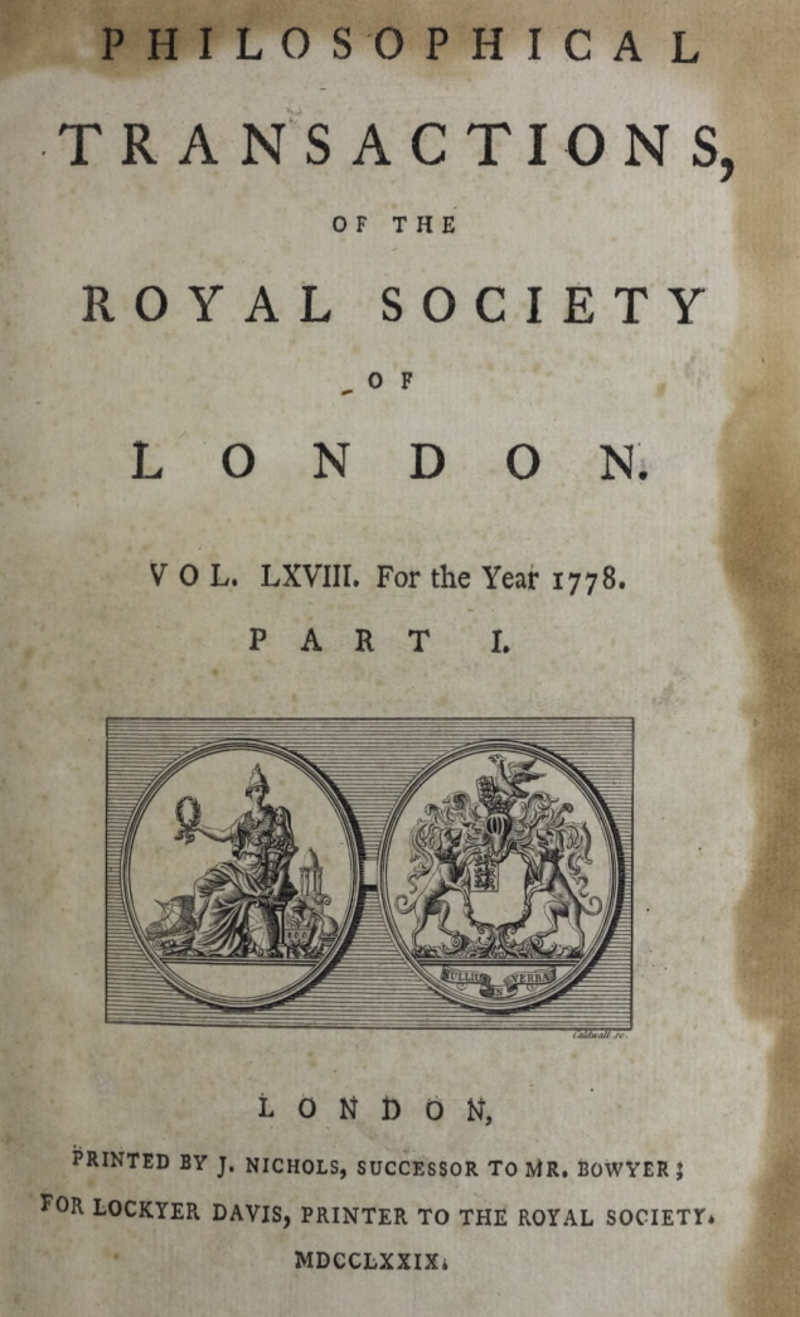 Title page for Volume 68 for the year 1778
Title page for Volume 68 for the year 1778
The changing visual style coincided with changes among the printers of the journal. William Bowyer and John Nichols served as printers between 1775 and 1777. After the death of Bowyer in 1777, sole ownership of the business passed to Nichols, who by this time was gaining fame as a printer within literary circles. In 1779 he even became the editor of the Gentleman’s Magazine, a popular antiquarian and literary periodical.
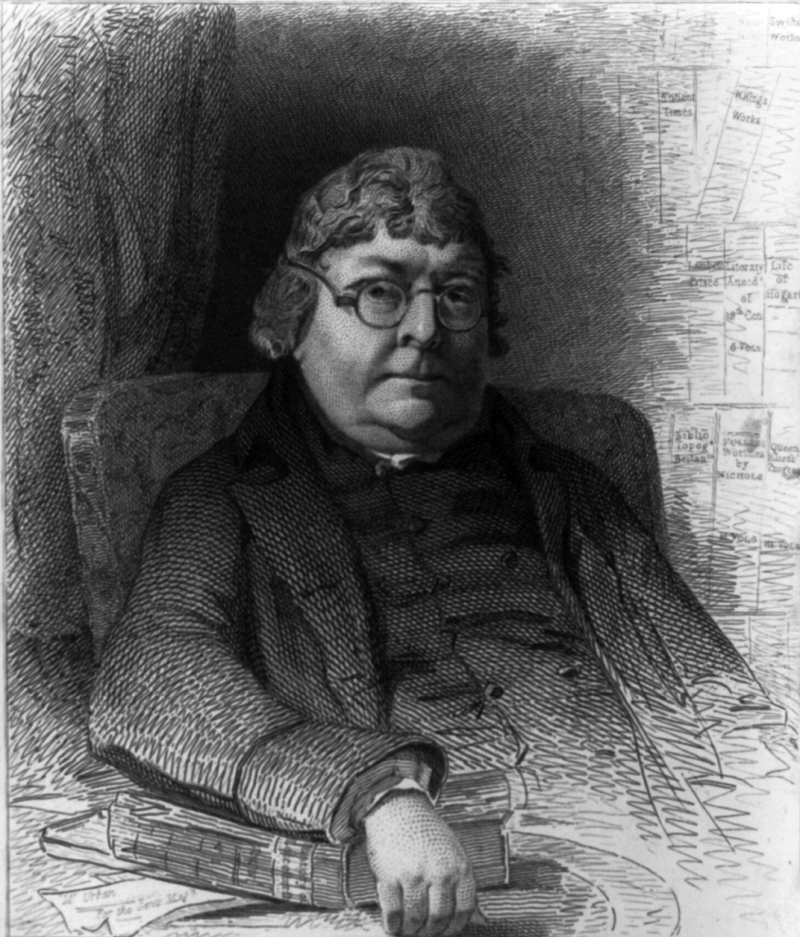 Portrait of John Nichols (1745-1826) – Wikimedia Commons
Portrait of John Nichols (1745-1826) – Wikimedia Commons
The introduction of the new visual design for the title page of the Philosophical Transactions dates from 1777 when Nichols took over the business. The Copley Medal featured on the title page from 1778 to 1791, and between the articles, the pages were embroidered: branches of trees grew from vases, and monuments stood tall in imagined landscapes. The scientific text no longer existed in a vacuum. Instead, it was placed within a constellation of ornamental, antiquarian and natural historical decorations.
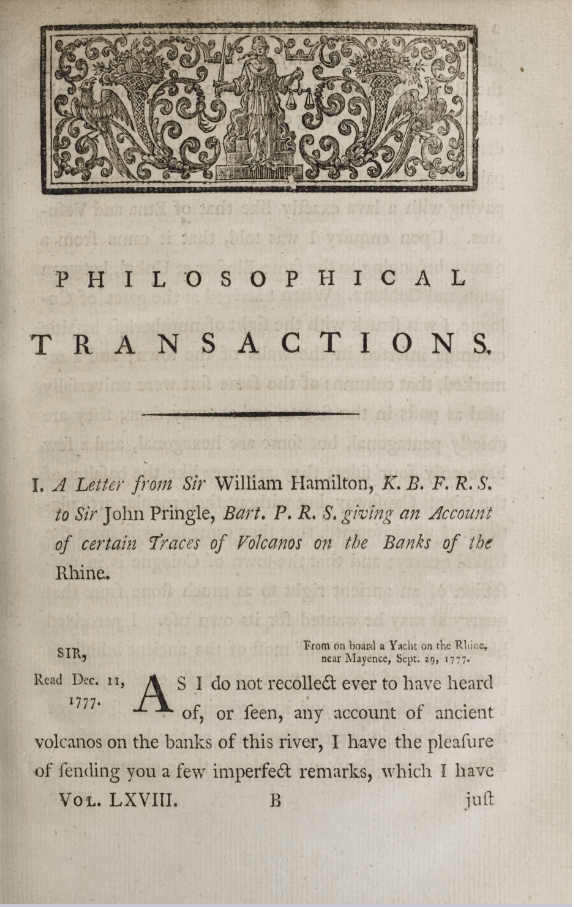
A gif showcasing the various ornamental designs
Whether the new visual style was a success or not, the physical qualities of the journal worsened while Nichols was the printer, according to this article by historian Aileen Fyfe. On 2 July 1779 a Council meeting took place at Royal Society to investigate the ‘great negligence & irregularity on the part of Mr Nichols the Printer’. They noted that ‘in several instances, particularly in January 1787, the printing of the Transactions was interrupted, and considerable delay occasioned thereby’, and that the printer had lost several revisions, which led to the Society’s Secretary having to correct the sheets a second time. On some occasions the requested revisions did not make it into the final publication.
Upon examining the physical qualities of the pages of the journal, Council found that ‘the press-work was ill executed, and the ink foul and of a bad colour; and that the copies on small paper were put out of hand in a more slovenly manner than on large paper.’ Finally, Council stated that according to ‘foreigners’ the journal was ‘worse printed than the publications of most of the other learned Societies of Europe.’
The Council meeting concluded with an apology from Nichols but his work was not needed for much longer. In 1791 discussions arose about the employment of a new printer, and the services of Nichols were terminated on the grounds that he was unable to provide the typeface that the Royal Society sought.
The Royal Society’s archives still hold a few letters relating to Nichols that highlight his failures. One of these is a note stating that the original manuscript of a paper was lost by him. Another document is a letter written by the astronomer William Herschel, in which he asks Nichols to make several editorial changes to his text. There are also copies of letters sent by Secretary Charles Blagden to Nichols, noting difficulties in transmitting proofs between the two of them, the inclusion of items in the errata, and changes to the printing of the Philosophical Transactions.
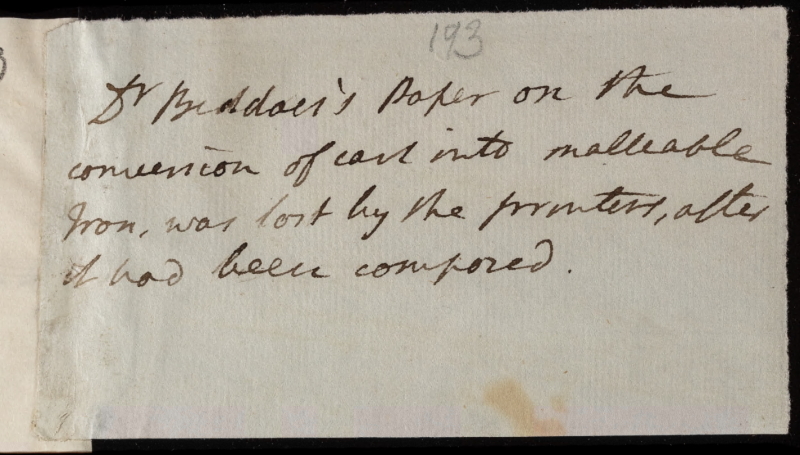 Note stating that the original paper was lost by the printer, John Nichols
Note stating that the original paper was lost by the printer, John Nichols
Considering the fate of Nichols, the inclusion of the Copley Medal woodcut in the Philosophical Transactions between 1778 and 1791 is no longer seen as a simple experiment with the journal’s visual style. Instead, it becomes the symbol for the printer’s decorative demise. The poor physical quality of the journal was not only an inconvenience; it was also a matter of scientific reputation on a European scale.







